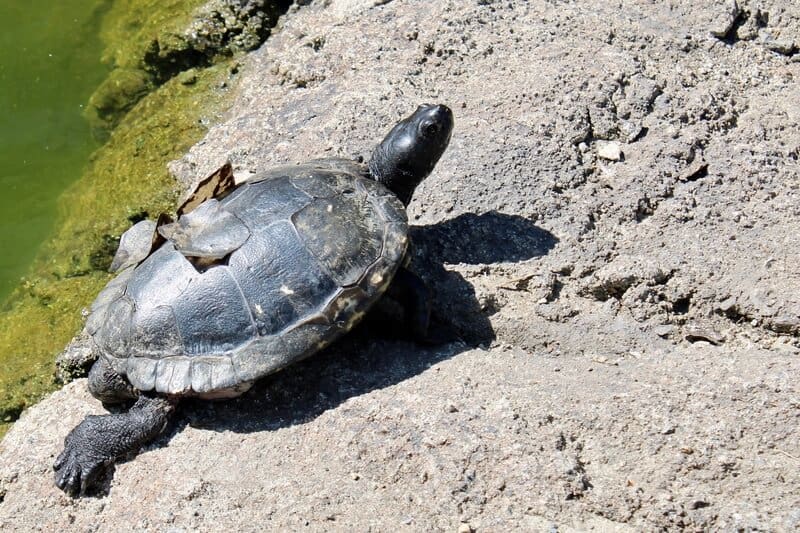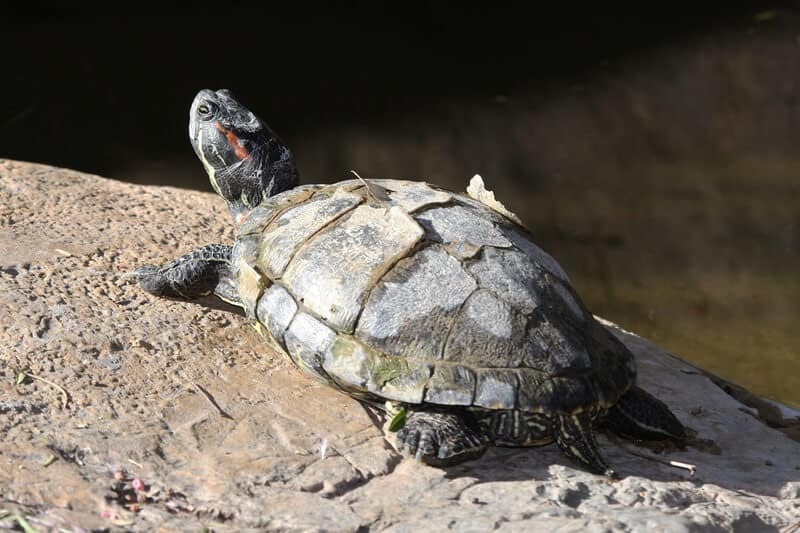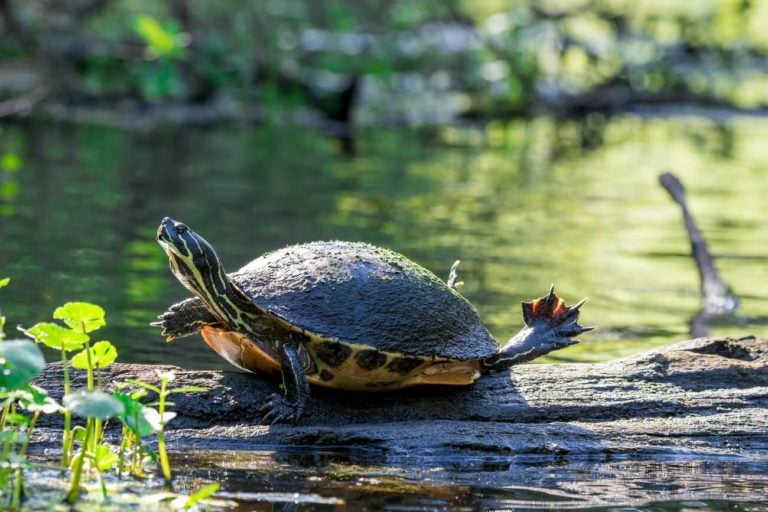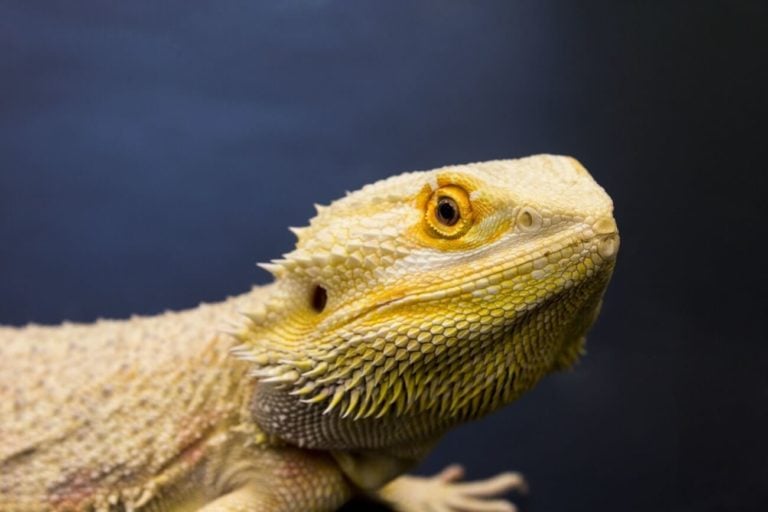Being able to recognize a shedding turtle shell and determine if everything looks healthy is incredibly important if you have these reptiles as a pet. And unfortunately, many owners aren’t sure what to do when they see a peeling shell!
This guide will break down everything you need to know about shedding turtle shells, and what to do if the process doesn’t go smoothly.
Table of Contents
Do Turtles Shed Their Shell?
A turtle’s shell is an intricate part of its physiology and one that they are born with. It provides protection for a turtle’s body, and many species also use it to regulate their body temperature. In a normal situation, turtles will shed (or peel) their shell once every one to five years, depending on the type of turtle and its specific needs.

Throughout a turtle’s life, it will grow and periodically need to replace portions of its old shell with new ones. This is because as animals grow, their shells can start to change shape or become too small if the growth spurt has been especially rapid. Adaptation of the shell is needed because it allows the turtle to grow the next layer of its skin and scales in an environment that offers room for growth.
A shed shell is a normal and healthy process for turtles and does not mean that your turtle is sick. Shedding can be very delicate, and if it is forced, the turtle can be harmed. When a turtle goes through the process of peeling its shell for too long, it will not lay eggs and will become ravenous. After a period of time, the shell begins to crack, and the fluids from underneath begin to seep out.
Signs Of Healthy Turtle Shell Peeling
Because the process of shedding or peeling its shell is normal for a turtle, it’s important to know what’s normal. That will prevent you from needless worry, or taking action when you don’t need to.
Your Turtle Is Healthy And Energetic
A healthy turtle will still be very active regardless of whether or not it is in a shedding stage. If your turtle is energetic and shows interest in food and water, you can rest easy knowing that the process will be successful.
All Of The Scutes Have A Thin, White Fluid Underneath Them
When a turtle sheds its shell, it will often leave behind a thin sheen of protective fluid on the scutes. This white fluid, called “water osmosis, ” is produced by specialized cells found throughout the shell.
The Pieces Fall Off Rather Easily
A shedding turtle shell should peel off without much struggle. This means that there are no cuts or broken skin to worry about.
New Growth Is Visible Underneath The Scutes, Which Fall Out In One Piece
New shell growth should be visible underneath the peeling scutes of your turtle and will fall out in one piece. This also means that there are no rips or tears.
Everything Smells Fine
If your turtle enters a shedding or peeling cycle, it will produce an odor as they head toward the next layer of its skin. This is an entirely normal and healthy process, but if you begin to smell something seriously foul, that’s another story (more on that later).
Your Turtle Has No Wounds, Cuts, Or Obvious Signs Of Distress
After the shedding process is over, their shell should look healthy and smooth. If it doesn’t, your turtles could be experiencing an illness that requires medical attention. Rapid shell shedding or peeling is also a sign of illness in turtles. In most cases, you will see very visible wounds on the inner side of the scutes that indicate that your turtle is unhealthy.
There Isn’t Any Redness, Irritation, Or Swelling In The Area
The skin underneath your turtle’s scutes should look healthy. If there is any redness or irritation present, it would indicate that an issue has occurred during the peeling process that needs to be addressed.
Signs & Causes Of Unhealthy Shell Peeling
Now that you know what’s normal, it’s time to go over concerning signs to look for. Knowing these will help you act quickly and make sure your turtle stays healthy.
Your Turtle Is Lethargic Or Not Moving
A lethargic turtle will not move and will often not show any interest in food. If your turtle is done peeling its shell and doesn’t begin to eat after a few days, it is likely that there is something wrong.
Several Scutes Contain A Reddish-White Fluid
If a turtle’s scutes store a reddish-white slurry fluid, it can indicate that your turtle is suffering from a serious ailment. The combination of blood and mucous is a sign that there may be internal bleeding in the body, which can potentially be life-threatening.
Pitted Or Crumbling Scutes
When peeling, your turtle’s shell should not crumble and be easily removed. Pitted scutes are a sign that your turtle is unhealthy and could be in need of immediate medical attention. Shell rot occurs when the shell’s outer layer develops soft material and begins to deteriorate. This can lead to severe bacterial infections within your turtle’s body, which can be fatal. When your turtle is ill, it will also have a higher chance of getting an infection as its immune system begins to weaken.
A Foul Smell
Some turtles will present with a bad-smelling fluid in their scutes. This happens when the turtle’s pH level is out of balance due to an imbalance in their diet or living area, resulting in them getting sick. If the shell smells bad, clean up the water in your habitat and monitor your turtle’s health for at least two weeks to make sure there are no other underlying issues causing this problem.
The Turtle Is Overweight
A turtle that’s overweight is far more likely to not shed or peel its shell correctly. Not only can being overweight lead to problems with its shell, it can result in a variety of other health issues that you’ll want to avoid..
Fungal Infections
Fungal infections occur when the fungi produce spores that are then introduced into the body. If your turtle has a fungal infection, it will have discolored scutes that may have cracks, open wounds, or holes in them. This can start to affect their blood, resulting in weakness and bleeding.
Basking In Very Hot Areas
Exposing your turtle to a very hot environment can cause shell rot or issues with shedding. Basking in very hot areas can also cause dehydration, which is dangerous for turtles. If your turtle is losing its ability to regulate body temperature, it may also be suffering from shell rot.
Low Environmental Temperature
A low environmental temperature can also cause a turtle’s shell to not peel properly. If your turtle stays in an area with a very low temperature, there’s a strong chance it will suffer from health issues since it cannot regulate itself as well as at a normal temperature.
High Levels Of Ammonia In The Turtle’s Water
High levels of ammonia in a turtle’s water is also something to watch out for. If you notice that your turtle is peeling, but the shedding process is not happening correctly, this might be the cause. You can use a water test kit to analyze the amount of ammonia that’s in their water.
Liver Problems
If your turtle is suffering from a liver problem, it will begin to produce ammonia through the breakdown of the toxins that it produces. This can cause issues with their shell (both during and after shedding) if not taken care of by a vet.
Renal Infections And Renal Stones
If your turtle’s urine becomes very cloudy, it could be a sign of a renal infection or kidney stones. Problems with shell shedding can also happen when renal infections occur, which is why it is important to watch your turtle closely. A sudden change to the peeling process or color of the scutes can indicate if your turtle may be suffering from an illness.
How To Treat Unhealthy Shedding
If your turtle is suffering from an issue that causes it to have unhealthy shell shedding, there are actions you can take to correct the problem. While this doesn’t happen often, it’s important to know what to do so you can take action quickly.
Debriding
If your turtle is having trouble with the shedding process, it’s possible to remove some of the problem scutes. However, this should only be done by an experienced vet. They have the necessary experience and will use special tools to remove the entire shell and take care of any infections.
Clean Its Water
If your turtle is having problems with the shedding or peeling process, you might want to clean the water in its habitat. To test if this is the problem, mix fresh water with the old and keep a close eye on the behavior of your turtles after adding fresh water. Try changing 50% of their habitat’s water every week until you notice an improvement in their health and shedding process.
Improve The Quality Of Their Food
If the turtle isn’t benefiting from the proper nutrition, it might not be able to shed its shell properly. Do an honest assessment of their diet and look for opportunities to improve. Your pet will thank you for it!
Maintain The Proper Water Temperature
A proper water temperature is essential for healthy turtles. A water turtle that is overfed and unable to regulate its body temperature will be unable to shed its shell properly, causing serious health issues and even death. It is imperative that you keep the temperature of your water at a constant level.
Be Sure To Keep Your Turtles In A Pollutant-Free Environment
Pollutants in the water can cause a variety of shedding issues. If you notice that your turtle is displaying concerning shell peeling symptoms, it may be due to chemical pollution in its water. If you have a turtle pond or aquarium, keep it clean and filter the water regularly. It is important that you watch for pollution as this can cause your turtles to suffer from illnesses such as shell rot.
Getting A Sick Pet To A Vet As Quickly As Possible
If it’s clear that your turtle is suffering from an illness or has some injury, you must take it to a veterinarian. If they have a fungal infection, it needs to be treated right away so that permanent damage to the shell can be avoided. When this occurs, the shell will peel away even when it’s not supposed to. If left unchecked, this could lead to serious issues with their bones and organs.
What’s The Difference Between Shell Peeling & Shell Rot?
The difference between shell shedding and shell rot is that shell shedding is the natural process of a turtle gradually growing and replacing old parts of its shell with new ones. The shedding or peeling process is perfectly normal and healthy for turtles.
Shell rot occurs when the skin on your turtle’s shell is infected or damaged and cannot shed properly. The old scutes are unable to be removed, so they begin to crack or fall off. This leaves your turtle with a soft, exposed shell that can lead to other health problems. Shell rot is dangerous for turtles and can be fatal if left untreated. If you notice unusual changes to your turtle, it may be suffering from a shell rot issue.
Conclusion
Turtles do shed their shells, but it’s not in the way that many people assume! Now that you know what the process looks like, it will be easier for you to recognize what is normal and what isn’t.
If you have any questions about this, we’re always happy to help. And as always, take your pet to the vet if you see any concerning symptoms!



